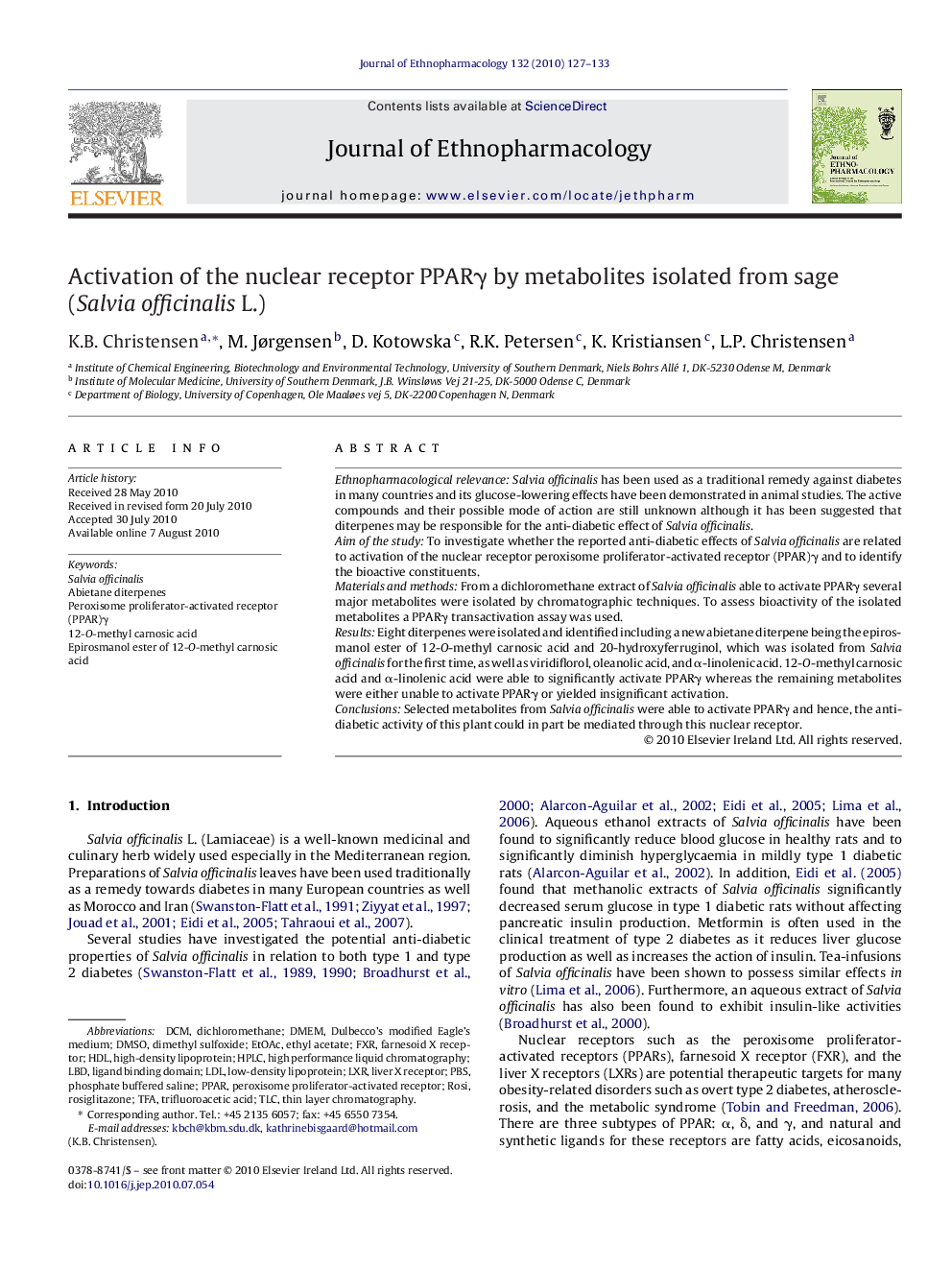| Article ID | Journal | Published Year | Pages | File Type |
|---|---|---|---|---|
| 2545657 | Journal of Ethnopharmacology | 2010 | 7 Pages |
Abstract
Ethnopharmacological relevanceSalvia officinalis has been used as a traditional remedy against diabetes in many countries and its glucose-lowering effects have been demonstrated in animal studies. The active compounds and their possible mode of action are still unknown although it has been suggested that diterpenes may be responsible for the anti-diabetic effect of Salvia officinalis.Aim of the studyTo investigate whether the reported anti-diabetic effects of Salvia officinalis are related to activation of the nuclear receptor peroxisome proliferator-activated receptor (PPAR)γ and to identify the bioactive constituents.Materials and methodsFrom a dichloromethane extract of Salvia officinalis able to activate PPARγ several major metabolites were isolated by chromatographic techniques. To assess bioactivity of the isolated metabolites a PPARγ transactivation assay was used.ResultsEight diterpenes were isolated and identified including a new abietane diterpene being the epirosmanol ester of 12-O-methyl carnosic acid and 20-hydroxyferruginol, which was isolated from Salvia officinalis for the first time, as well as viridiflorol, oleanolic acid, and α-linolenic acid. 12-O-methyl carnosic acid and α-linolenic acid were able to significantly activate PPARγ whereas the remaining metabolites were either unable to activate PPARγ or yielded insignificant activation.ConclusionsSelected metabolites from Salvia officinalis were able to activate PPARγ and hence, the anti-diabetic activity of this plant could in part be mediated through this nuclear receptor.
Keywords
PBSFXRSalvia officinalisLXRPPARTFATLCEtOAcHDLDCMLBDAbietane diterpenesDMEMDMSOfarnesoid X receptorhigh-density lipoproteinDulbecco's modified Eagle's mediumEthyl acetateTrifluoroacetic acidligand binding domainDichloromethaneDimethyl sulfoxideROSIrosiglitazonePhosphate buffered salineLow-density lipoproteinLDLliver X receptorthin layer chromatographyhigh performance liquid chromatographyHPLCperoxisome proliferator-activated receptor
Related Topics
Health Sciences
Pharmacology, Toxicology and Pharmaceutical Science
Pharmacology
Authors
K.B. Christensen, M. Jørgensen, D. Kotowska, R.K. Petersen, K. Kristiansen, L.P. Christensen,
